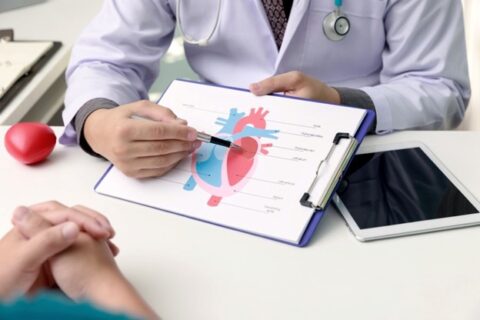How to Prepare for Your Heart Catheterization Procedure

How to Prepare for Cardiac Catheterization in Sugar Land, TX
Has your doctor recommended cardiac catheterization? It sounds intimidating, but this minimally invasive procedure helps doctors get a clear view of your heart’s health so they know what steps to recommend next. The key to a smooth experience is patient preparation. Here’s how to get ready and what to expect.
What is Cardiac Catheterization?
Cardiac catheterization is a diagnostic heart procedure where a thin, flexible tube (called a catheter) is inserted into a blood vessel in your arm, groin, or neck and guided to your heart. The doctor uses this to check for blockages in your coronary arteries or other heart issues.
Sometimes, if they find a problem, they can treat it on the spot by opening the blocked artery and placing a stent to keep it open. While this might sound complicated, it’s mostly routine. The procedure is relatively quick, lasting about 30 to 60 minutes, depending on whether any treatment is needed.
How to Prepare for Your Cardiac Catheterization
Follow your cardiologist’s preparation tips to ensure the procedure goes smoothly. Here’s what heart catheterization prep entails:
- No eating or drinking: If your appointment is in the morning, plan to not eat or drink anything past midnight the night before. If your procedure is scheduled for later in the day, ask your doctor if a light breakfast is allowed.
- Medications: Review your medications with your cardiologist before the procedure. Some medicines, especially blood thinners or diuretics, may need to be paused for a day or two. Your doctor will give you clear instructions on what to take and what to skip.
- Pre-procedure tests: Depending on your medical history, your doctor may order a few tests before the procedure, like blood work, an EKG, or chest X-rays.
- Transportation: You won’t be able to drive home, so arrange for someone to drop you off and pick you up after the procedure.
What to Bring to Your Appointment
Here’s a quick list of what to bring:
- Insurance card and ID
- Credit card or cash for the co-pay
- Referrals or authorization, if required
- List of current medications and doses
- Comfortable clothing
- Glasses and/or hearing aids
- Entertainment, such as a book or mobile device
What to Expect at Your Appointment
Plan to arrive 60 to 90 minutes before the procedure is scheduled to start. After check-in, you’ll be taken to the prep area, where nurses will help get you ready. They will verify your medical history, take your blood pressure, and possibly do additional blood tests.
When the cardiologist is ready for you, a nurse will accompany you to the catheterization room. There, the catheter insertion site will be cleaned to avoid infection and numbed to make you more comfortable. You’ll be awake during the procedure, but an intravenous sedative will make you a little groggy.
The cardiologist will insert the catheter and thread it through your blood vessel to your heart using X-ray guidance. A contrast dye injected through the catheter will provide a clear look at your coronary arteries. If the doctor finds a blockage, they may perform a treatment immediately. In many cases, diagnosis and treatment happen in a single procedure, which is convenient!
After the Procedure
Once your heart catheterization is complete, you’ll be moved to a recovery area for monitoring and a chance to rest. Your doctor will review the results with you and discuss any necessary follow-up care. If you had a stent placed or another treatment performed, you might need to adjust your medications. Be sure to ask any questions you have before heading home.
Discharge Instructions
When you’re cleared to leave, your doctor will give you discharge instructions. These usually include the following:
- Rest and recover: Take it easy for the first 24 hours, and avoid heavy lifting or strenuous activity for at least three to five days.
- Monitor the insertion site: If you experience pain, bleeding, or changes at the catheter site, contact your doctor immediately.
- Hydrate: Drink plenty of water to help flush the contrast dye from your system.
- Follow up with your doctor: You’ll likely have a follow-up appointment to discuss a long-term care and prevention plan that fits your lifestyle and keeps your heart strong.
Cardiac Care in Sugar Land, TX
Ready to discuss the possibility of cardiac catheterization? Dr. Yassir Sonbol at Complete Cardiology Care in Sugar Land, TX, is here to help. As a board-certified interventional cardiologist with over 15 years of experience, Dr. Sonbol can answer any questions you have about the procedure. We don’t just treat your heart—we improve your quality of life with exceptional cardiac care. Contact us today to learn more or schedule a consultation.


